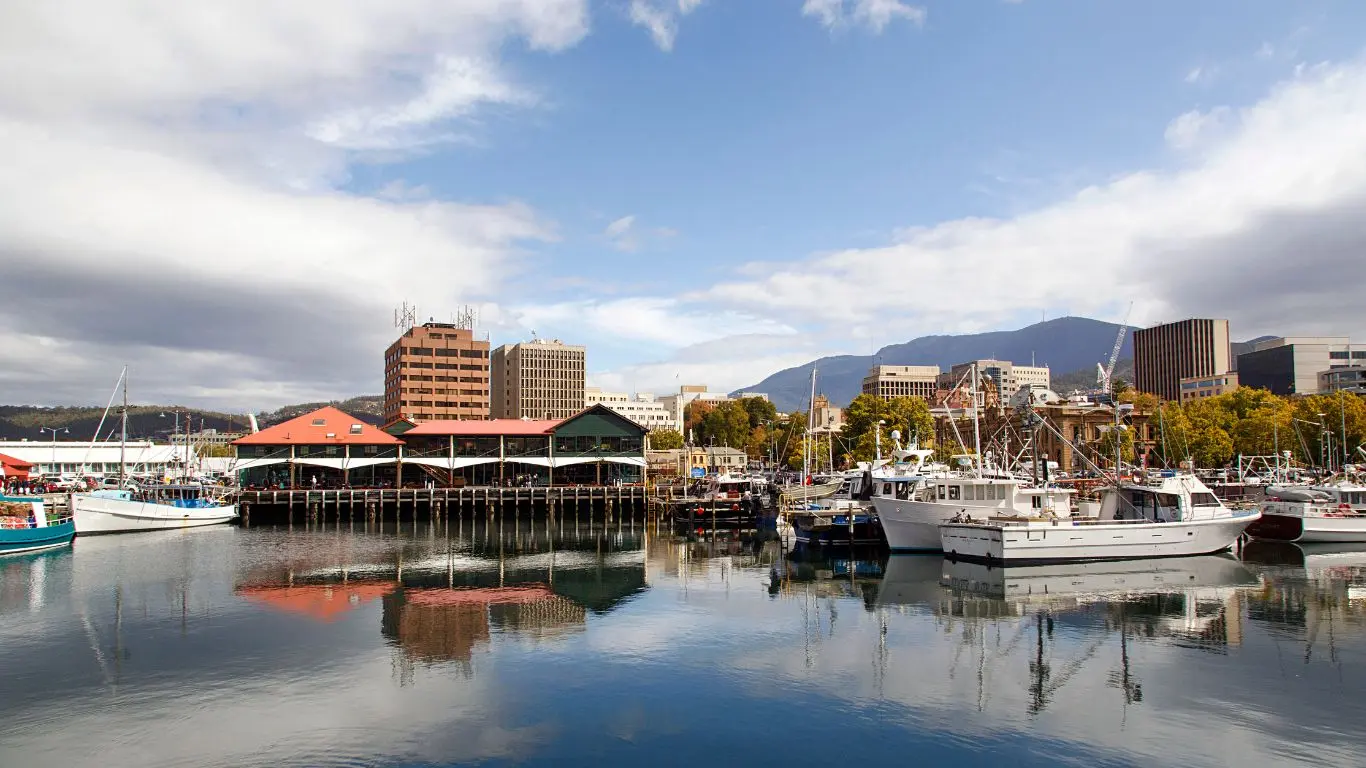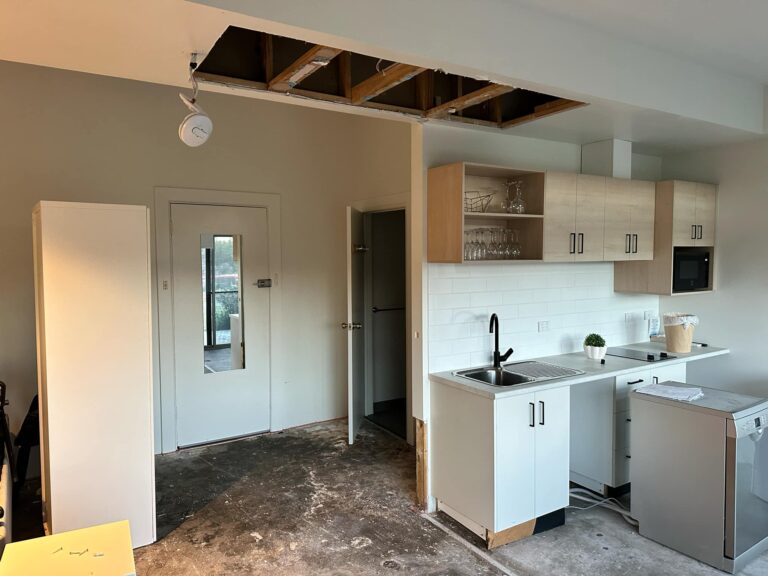Hobart’s flood history is shaped by its geography, climate, and human activity. The city has experienced many floods, impacting its development and emergency plans. From 19th-century destruction to modern flood management, these events have influenced Hobart’s infrastructure and community awareness. This overview looks at past floods, current challenges, and future strategies to reduce flood risks in a city where water is crucial yet potentially hazardous.
Introduction to Hobart’s Flood History
Geographic and Climate Overview
Hobart, located between Kunanyi/Mt Wellington and the Derwent Estuary, is prone to floods due to its temperate oceanic climate. The city experiences a range of temperatures and occasional snowfall. With cool summers and mild winters, Hobart often has cloudy days, increasing the likelihood of rain.
The Significance of the Derwent River
The Derwent River is central to Hobart’s landscape and history. It was crucial to the whaling and sealing industries and now serves as a major port and administrative centre. Hobart is located on the river’s estuary, which functions as a deep water port and a potential pathway for floodwaters.
Hobart’s Vulnerability to Floods
Hobart’s risk of flooding comes from a few sources. The steep slopes of Kunanyi/Mt Wellington, combined with Tasmania’s heavy rainfall, can cause water to rush through the city’s watercourses. Flash flooding is especially worrying because it means water levels can rise and fall quickly, and this risk is heightened by high tides during extreme rain events.
Urban development in Hobart has also upped the ante on flood damage. Many homes are built near both piped and open watercourses. The city’s flood history has been thoroughly examined, with major rivulets studied and city-wide flood mapping carried out.
The City of Hobart has taken steps to lessen flood risks. These include keeping up with flood alert systems, debris irons, and boulder traps, as well as ensuring the pipe system stays unblocked. When a flood hits, the priority is to tackle infrastructure blockages and respond to residents’ concerns.
The flood maps are crucial for recognising and managing flood risks, pointing out areas that are likely to be hit during a 1% Annual Exceedance Probability (AEP) event. For a more detailed map visit Potential Inundation Hazard Areas – Modelled 2100 1% AEP Flood Areas.
Areas below 3 metres on the Australian Height Datum (Tasmania AHD83) are seen as at risk. Models suggest that the maximum 1% AEP storm surge for the year 2100 could reach 1.943 metres above AHD83. An extra metre is added to account for wind and ocean swell generated waves.

Early Records of Flooding in Tasmania
The First Documented Floods
The city’s first significant floods were recorded in September 1828, when most bridges in the Midlands were destroyed. The Ross bridge, however, withstood the event, despite being submerged.
Notable 19th-Century Flood Events
The South Esk basin, Tasmania’s largest water catchment area, experienced several significant floods during the 19th century, specifically in 1852, 1863, 1872, 1889, and 1893. The 1863 event was particularly severe, with a flow of 4625 cusecs in the South Esk, surpassing the 1852 event’s flow of 4190 cusecs.
Floods of the 20th Century
The Devastating 1929 Flood
The year 1929 marked a catastrophic period in Tasmania’s history, particularly for the city of Launceston, due to the infamous floods that claimed 22 lives and caused extensive damage. Triggered by a deep low-pressure system, intense north-easterly winds and heavy rainfall swept across the state. The floods hit the north and north eastern regions hardest.
The Briseis Dam collapse at Derby unleashed a destructive torrent, resulting in the loss of 14 lives and the obliteration of the town’s infrastructure. The South Esk basin, which had seen numerous floods before, was again the scene of devastation. The floodwaters rose to unprecedented levels, inundating over a thousand homes in Launceston and forcing the evacuation of 3,500 people.
The Duck Reach power station was destroyed, leaving the city without electricity and disrupting essential services. In the aftermath, the community struggled with the loss of bridges, livestock, and the destruction of the railway station. This highlighted Tasmania’s infrastructure’s vulnerability to natural disasters.
The government provided support through measures such as interest-free loans for primary producers under the Flood Sufferers’ Relief Act after the 1929 flood.
Mid-Century Floods and Urban Development
1947 Floods
The 1947 floods were the most substantial for the southern part of the state since at least the 1870s. The Derwent and Huon rivers reached near-record levels. The Butler’s Gorge Hydro-Electric operations were destroyed, a significant portion of the hop crop was lost, and over a thousand dairy cattle perished in the Huonville area. The West Coast experienced severe damage to the Emu Bay Railway.
1954 Floods
The Hobart Rivulet, a significant watercourse in Tasmania’s capital, has a rich history of shaping the city’s landscape. Originating from the pristine slopes of Kunanyi/Mount Wellington, the rivulet meanders through the lush suburb of Fern Tree and the historical precinct of South Hobart before making its way into the central business district (CBD), where it continues its journey underground.
The rivulet has played a crucial role in Hobart’s development, providing water for the early settlers and powering the mills that were instrumental in the city’s growth. However, it has also been a source of natural challenges, particularly flooding.
The 1954 floods in Hobart, caused by the overflowing of the Hobart Rivulet and other waterways, were a defining moment in the city’s history. The floods were triggered by a combination of heavy rainfall, which amounted to more than 150 millimetres (about 6 inches) within a 24-hour period, and the already saturated ground from previous rains. The floods affected a large portion of the city, with the CBD and surrounding suburbs being particularly hard hit. The water levels in some areas rose to several meters, submerging streets and buildings.
The 1960s: A Time of Change and Response
The 1960 floods saw widespread damage across the state, with the Macquarie, Elizabeth, Lake, and Liffey Rivers overflowing. Communities were isolated, and homes were destroyed. Hobart itself suffered considerable losses, with the Hobart Rivulet flooding and causing record damages.
The state began to focus on reducing government involvement in risk management. Greater emphasis was placed on personal responsibility and self-help measures. However, the limitations of this approach became evident as the cost of repairs and the inadequacy of insurance policies were highlighted by subsequent flooding events.
The government’s balancing act between large-scale infrastructure planning and encouraging household-level self-help measures remains a critical aspect of Tasmania’s ongoing efforts. These efforts aim to manage flood risks and enhance community resilience.

21st Centaury Floods in Hobart
Hobart’s 2016 Floods
In 2016, Tasmania experienced severe flooding that resulted in three fatalities and extensive damage across the state. The floods were triggered by significant June rainfall, affecting rivers such as the Mersey, Forth, Meander, North Esk, South Esk, Macquarie, Ouse, and Derwent. The Huon River experienced its worst flood in twenty years during a subsequent July event. The flooding had a considerable impact on 20 of Tasmania’s 29 Local Government Areas, with social, economic, and environmental repercussions. The total recovery cost was estimated at $180 million.
During this flood the Hobart Rivulet wall collapse caused extensive flooding at the newly reopened Myer store and surrounding shops, leading to over $15 million in damages. Affected parties, including Myer and other businesses, have initiated legal action against the Builders and engineers for damages related to lost rent, damaged stock, and business interruption. Investigations revealed pre-collapse warning signs, including cracks in the arcade’s floors and over-excavation issues during construction.
View the independent review of the June and July 2016 floods.
Hobart’s 2018 Floods
In May 2018, Hobart faced unprecedented flash floods due to a complex low-pressure system. The event, which peaked on May 10th, brought intense southerly winds and record-breaking rainfall to Tasmania’s southeast. Notably, Kunanyi/Mount Wellington and Leslie Vale recorded rainfall of 236.2mm and 226.4mm, respectively.
The deluge, concentrated in just six hours, caused widespread flash flooding, particularly affecting Hobart’s CBD, Salamanca, South Hobart, Sandy Bay, New Town, Blackmans Bay, and Kingston. The Hobart Rivulet overflowed, sweeping away cars and causing significant damage.
The aftermath was severe: over 13,000 homes lost power, 30+ schools shut down, and infrastructure suffered extensively. Despite its rarity, with an annual exceedance probability of less than one percent, the floods prompted hundreds of emergency calls and the establishment of evacuation centres.
The Australian Government declared the event a disaster on May 14th, unlocking relief funds. The Insurance Council of Australia labelled it a catastrophe, prioritizing claims. By late August, claims had reached nearly 8,800, with damages surpassing $137 million. Remarkably, there were no fatalities.
Modern Floods and Management and Prevention
Adoption of Flood Mitigation Strategies
To address the flood risks, extensive studies have been conducted, analysing the Hobart, New Town, and Sandy Bay Rivulets. These efforts have culminated in the development of city-wide flood mapping for a 1% AEP event. The city’s strategies encompass a range of preventative measures, including the enforcement of statutory planning controls in vulnerable areas and the maintenance of a flood alert system for key watercourses. Physical measures such as debris irons and boulder traps are also in place to mitigate the effects of floodwaters.
In the event of flooding, ensuring the functionality of the drainage infrastructure is paramount. The city is proactive in addressing reported infrastructure issues to mitigate the situation. Post-flood recovery involves the removal of debris and the restoration of damaged assets.
Role of Infrastructure in Flood Prevention
The city’s interim town planning scheme includes overlay maps that identify areas susceptible to natural hazards. These maps guide the application of sustainable planning principles in new developments, aiming to prevent exacerbation of flood risks.
Despite these modern planning principles, much of the city’s infrastructure predates their implementation. Consequently, the city often depends on the insurance system for risk management and recovery. The May 2018 flood, which resulted in repair costs exceeding $137 million, highlighted the limitations of insurance for many residents and the necessity of integrating sustainable planning into the management of all infrastructure.
Flood Warnings and Preparedness Programs
Local authorities are responsible for implementing flood warnings and preparedness initiatives. The NFMIP, part of the Emergency Response Fund, exemplifies the commitment to enhancing disaster resilience. With allocated funds for 2020-21 and 2021-22, the program supports state and territory governments in constructing or upgrading flood mitigation infrastructure.
Tasmania is set to benefit from the Albanese Government’s Disaster Ready Fund, with nearly $30 million allocated for disaster prevention, including federal and state contributions. This investment supports projects such as flood mitigation in the Sheepwash Creek catchment, flash flood mitigation in the Derwent Valley, and improved landslide risk mitigation in urban areas.
These initiatives reflect a proactive approach by authorities to not only respond to flood events but also to actively diminish their future impact on communities. Investments in infrastructure, enforcement of development restrictions, and improved hazard communication are key steps in protecting residents from the unpredictability of floods.
Forward Through Vigilance and Adaptation
The historical floods of Hobart serve as potent reminders of nature’s untamed force—a force that communities along the Derwent and beneath Kunanyi/Mt Wellington must respect and prepare for. The collaborative efforts of the Hobart community, government, and local authorities reflect a dedication to safeguarding the city’s future.
Investments in infrastructure and revised planning aim to lessen the potential devastation of floods, while awareness programs empower residents with knowledge and resources. As Hobart faces the challenges of a changing climate and continued urban development, the lessons from the past converge with the innovations of the present to fortify the city’s defences against the unpredictable waters. Together, we navigate the path of resilience, recognising that the stewardship of our environment and the safety of our community go hand in hand.
Immediate Water Damage Restoration Services
In the unfortunate event of flood damage to your property, act swiftly to mitigate the impact. Our team of experts is available 24/7 to provide comprehensive water damage restoration services. Don’t let water damage linger and lead to further issues.
For further information, visit our blog on how to prevent water damage in your home or business, and the impacts of water damage on your home or business.




